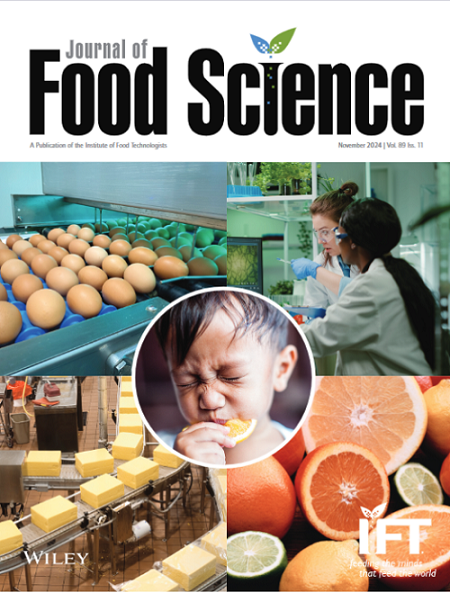Characterization and Identification of Potential Antioxidant, Antidiabetic, and Antihypertensive Peptides From Hydrolysates of Tenebrio molitor Flour and Its Protein Concentrate
Abstract
Insects are recognized as a potential alternative source of proteins and have been studied in recent years as a substrate for enzymatic hydrolysis to obtain bioactive peptides. This study aimed to evaluate the production of hydrolysates with antioxidant, antidiabetic, and antihypertensive properties from mealworm (Tenebrio molitor) flour and its protein concentrate. The proteases flavourzyme, alcalase, and neutrase were used for hydrolysis, according to an experimental design of mixtures. The highest antioxidant properties for the mealworm flour were found in the control test, where the substrate remained non-hydrolyzed. The mealworm protein concentrate hydrolysates treated with Flavourzyme exhibited the highest values for ABTS and DPPH radical scavenging activities. The hydrolysis of mealworm flour and its protein concentrate increased their inhibitory activities against α-amylase, α-glucosidase, and angiotensin-converting enzyme. A significant (p < 0.05) and positive correlation was observed between the profiles of protein solubilization (R2 > 0.96), free amino groups (R2 > 0.94), and antioxidant properties (R2 > 0.87) of the hydrolysates obtained from integral flour and of its protein concentrate, indicating that the enzyme action was maintained, despite the differences in substrate composition. The results showed that, in terms of the process, protein concentration is not essential for the production of hydrolysates with bioactive properties. The proteomic analysis identified 38 peptides in the < 3 kDa fraction of the mealworm concentrate protein hydrolyzed with Flavourzyme. These sequences were composed of fractions characterized as bioactive, and in silico analysis predicts some potential bioactive peptides, such as the sequence LPAIL.


 求助内容:
求助内容: 应助结果提醒方式:
应助结果提醒方式:


